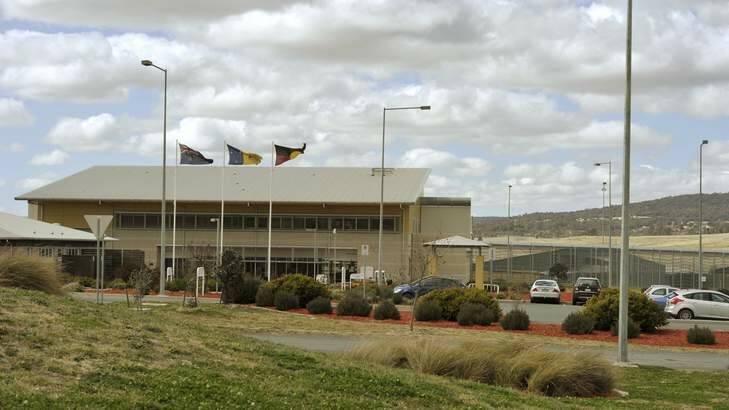The latest prison figures released by the Australian Bureau of Statistics on March 27, together with a little extra digging for old data, confirm a suspicion that I have had for some time: all Australian criminal justice systems are slowly and surely grinding to a halt.
Subscribe now for unlimited access.
$0/
(min cost $0)
or signup to continue reading
I have noted previously on a number of occasions that the ACT is by far the worst jurisdiction in the proportion of its prisoners who are unsentenced, or in common parlance, are remandees. On the first day of December 2012, out of a total of 262 prisoners in the ACT jail, 91 were unsentenced, that is 34.7 per cent of the total.

On the same date, the equivalent percentages for the other jurisdictions were: NSW 27.7, Victoria 19.6, Queensland 20.5, Western Australia 19.7, South Australia 31.3, Tasmania 18.5, and Northern Territory 20.6. The average for Australia as a whole was 23.4.
The Australian proportion was based on the fact that on that day there were just over 30,000 people in prison in the whole country, of whom just over 7000 were remandees, waiting trial or sentence. That is a huge number who are technically (and in some cases truly) innocent of any crime but are suffering the indignity and discomfort of being in jail.
My suspicion that something was profoundly wrong stemmed from my belief that when I worked in prisons 50 years ago, and when I started research in this area about 40 years ago, remandees made up only about 10 per cent of the total. I recall writing an article for a Victorian journal of social issues under the title Unconvicted Prisoners: the Forgotten Ten Per Cent, which I think must have been based only on Victorian data.
To test the accuracy of my memory I spent a few hours at the Australian Institute of Criminology looking at annual reports of prisons departments (which have not been digitised) for the year 1975-76.
From reports which were available I was able to calculate the following percentages of remandees: NSW 11.7, Vic 6.3, Qld 13.6, WA 7.3, and SA 12.2. The crude (unweighted) average for that year for the bulk of Australia was 10.2. My suspicion was confirmed to an unexpected level of accuracy.
One can only speculate as to how this massive change occurred throughout Australia over the past half century. Perhaps nobody really noticed it because the change was extremely slow, even glacier-like. Also, the common practice among public administrators when a potential problem arrises is to ask what is the situation in the other states. If we don't look too different from the rest then there is nothing much to worry about.
But there is something very serious to worry about, and it concerns costs, justice and ultimately the safety of the community. If we could wave a magic wand and reduce the national remand rate to about 10 per cent the number of remandees would come down from 7000 to 2500 and the total number of prisoners would shrink from 30,000 to about 25,500.
That would mean a cost-saving of at least $450 million, which must be more than enough to appoint additional judicial officers who are so clearly needed in every jurisdiction.
More importantly, a sense of justice would be restored to both victims and offenders if the waiting time for a trial for a serious offence were reduced from the current 18 months to two years which is found in most Australian systems. Shorter waiting times would mean that fewer cases would collapse because witnesses were no longer available or evidence was lost or was contaminated.
A number of studies have shown that close to one half of all persons remanded in custody are either acquitted when they eventually get to court or, if found guilty, are sentenced to a prison term which is equal to the time they have served on remand.
That might sound fair, but time spent on remand is a total waste of time as remandees cannot be required to participate in prison programs such as anger management, sex offender treatment, cognitive skills, etc, which have been shown to reduce significantly the recidivism rates of those who complete them.
The solution to this creeping problem is not just the appointment of more judges, even though that is an obvious need. What are also needed are any procedural steps that can be taken to make the courts more efficient, such as reducing the number of days that a trial can last, except in extremely exceptional circumstances.
The most sinister danger of a criminal justice that is not efficient is that the public will lose confidence in it and become increasingly likely to resort to private solutions when an offence takes place. We in Australia are nowhere near the almost total collapse of justice that we have seen in India in recent months, but we are moving in that direction and must start taking steps to correct the situation.
Remand in custody is obviously necessary in many cases to prevent the continuation or repetition of criminal behaviour but it must be for the shortest possible time (and three months would seem a reasonable maximum) and the number of remandees must be kept as small as possible (and 10 per cent of the total number of prisoners also seems reasonable).
These days I have absolutely no influence on official decision-making, but I would like to respectfully suggest that the standing committee of attorneys-general and annual conference of Supreme Court chief justices may care to add this subject to the agendas for their next meetings.
Meanwhile, the rest of us may spare a thought for those 7000 people currently remanded in custody and ponder the question of whether or not such a number is really necessary.
David Biles is a Canberra consultant criminologist.
The assistance of the library staff of the Australian Institute of Criminology in the preparation of this article is acknowledged.

